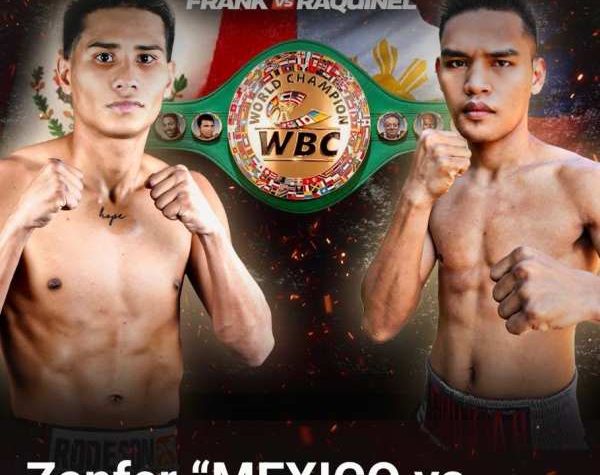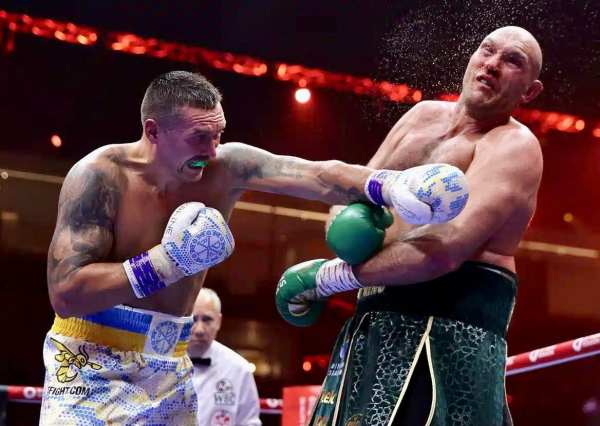
By Alexander K. Lee@AlexanderKLee
MMAfighting.com
Marc Montoya has given himself a tough act to follow.
It seems strange to say that Montoya’s Factory X gym broke through in 2018 given that it has been producing pro fighters since its inception almost a decade ago, but tune in to any random UFC fight card last year and there was a good chance you’d stumble upon at least one competitor who has swung by Englewood, Colo., to put in work with Montoya.
That list includes names like No. 1 light heavyweight contender Anthony Smith, veterans Court McGee, Zak Cummings, and James Krause, top 145-pound fighter Megan Anderson, and fresh UFC faces like Devonte Smith, Maycee Barber, and Ian Heinisch. Those last three names recently combined to go 7-0 across Dana White’s Tuesday Night Contender Series and their first UFC fights.
It’s Smith who is perhaps most responsible for pushing the Factory X name to the forefront. “Lionheart” had a breakthrough of his own last year, jumping up to light heavyweight and rattling off three straight wins to earn a surprising title shot against Jon Jones. Montoya will be in his corner when he challenges Jones for the light heavyweight championship in the main event of UFC 235 this Saturday at T-Mobile Arena in Las Vegas.
Building Smith into a headlining act didn’t happen overnight, nor did any of the success that Montoya’s fighters have experienced. He and his team work with what he estimates to be about 50 active fighters (35 pros, 15 amateurs) and as the gym expands, preserving its culture becomes even more important and more complicated.
Key to accomplishing that goal is a detailed vetting process, one that takes into account what’s best not just for Montoya’s team but for any fighters that are thinking of joining up.
“I have a process of guys coming in and run that in the sense of them having the ability to come in gives me the ability to assess them, them the ability to assess us, and then also see if it’s the right fit,” Montoya recently told MMA Fighting. “Can they fit into our culture? Culture’s everything when it comes to Factory X and the success we’ve had.
“I’ve had some talented kids come through the door that just don’t fit culture-wise, don’t fit in the system. And that’s okay, there’s nothing wrong with that kid, it just means it’s not going to work for us. There’s another spot for them. But I’ve had most kids come in and it works, so that whole process that’s in place is vital to our success.”
Montoya, 45, speaks from experience when he talks about properly assessing one’s situation. A fourth-generation Coloradoan, Montoya’s roots reach back into the 1850s when his family settled in Southern Colorado. Growing up in Denver, his first love was boxing and he participated in a number of sports growing up.
It was baseball that led to him getting a free ride at Metropolitan State University and then later a brief stop at a junior college in Kansas City. Eventually, he returned home to work in journalism, writing for the now-defunct Rocky Mountain News.
Eventually, Montoya realized that life wasn’t for him, and that put him on the martial arts path he’s been on for almost 20 years. From that perspective, one can see why he’s willing to put so much time into evaluating potential trainees.
“I’d rather spend 45 minutes with a kid and figure out this isn’t gonna work than them being there for a month and figuring out, ‘Shit, this isn’t gonna work,’” Montoya said.
So what does it take to pass the test?
According to Montoya, it’s not just about how hard you can kick, how fast you can shoot for a takedown, or how relentless you are on the mat. Being able to fight is the first step, the second is more akin to preparing for the NFL than a gym membership.
“One, we’re bringing in fighters and getting an assessment of talent, skill, and fit. And then two, I have my fighters take personality tests and IQ stuff, very similar to how the NFL would do with the Wonderlic test,” Montoya said. “So that’s a great assessment for us on the coaching end to see where does this fighter land? How do they learn? What coaches are going to be best suited to work with them? What type of IQ do they have? Because MMA IQ is very important inside of our teaching, so that’s another way.
“The other interesting way to just assess these guys and keep the culture going is that every year we vote as a team, our captains, and as our team grows, our captains list has grown. Our team captains are another filter in the sense of they’re on the ground floor and what are their thoughts? Obviously, all the coaches, what are their thoughts? And then we get a sense of it back from the kids coming in, so those kids it’s important that we’re the right fit for them.”
Montoya can’t stress the team concept enough, especially as his own responsibilities grow. While he’s used to having to travel, he understands that it can be disruptive to a fighter’s training if their head coach has to up and leave to accompany another to an event. Being able to adapt is essential, as is managing expectations.
Next month Montoya may have to travel to London, England, to corner Heinisch on March 16, or Nashville, Tenn., for Barber. This week, he’s in Las Vegas to coach Smith against Jones, as immovable an object as their is in MMA. Having come this far, don’t expect Montoya to be shocked if Smith picks up the upset.
Asked which of his fighters has surprised him most over the years, Montoya couldn’t pick one.
“I would say all of them. If they’re there, they surprised me,” Montoya said. “They’ve come in and said what they’re gonna do and they’re doing it. That’s the thing, you get a lot of people that say things. Can their words and actions meet?
“If they’re in Factory X, if they’re under that banner, if they’re a part of that team, then they’ve exceeded expectations because they are uncommon men and women amongst common people.”





More News
Casimero TKO’s Sanchez in 1st round
Raquinel wins WBC Continental Americas super flyweight title
Frank vs Raquinel on ABEMA LIVE PPV